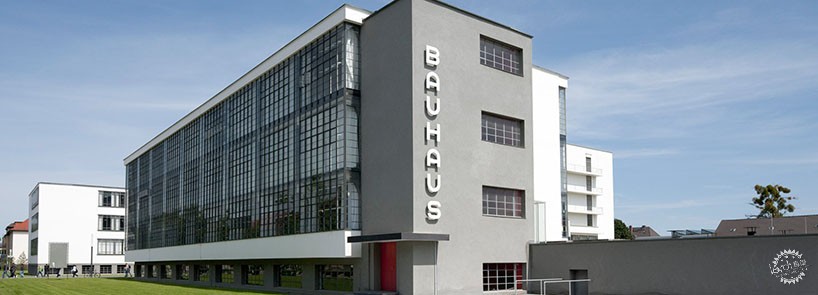
在包豪斯过夜,伴着现代主义精神入眠
Stay overnight at the Bauhaus and sleep with the modernist spirits
由专筑网李佳琪,李韧编译
包豪斯——这所具有令人惊讶的当今相关性的传奇学院——近期宣布准许开放给游客过夜。这里再现了无与伦比的创造力氛围,从平面图到材料,再到原来的家具,一切都回到了原来的状态。这座名为“ Prellerhaus”的建筑于1926年竣工,共有28间工作室,每间约20平方米。里面留存了一些最著名学生的秘密和故事,包括 Josef Albers, Herbert Beyer, Marcel Breuer, Anni Albers, 以及 Bertrand Goldberg 等人。
最近在德国德绍的包豪斯之旅中,Designboom加入了Thonet公司,一起探索他们是如何聚在这里,如何形成一种完全不同的,让人们受益至今的设计美学。
The Bauhaus — the legendary cultural institution with a surprising present-day relevance — is now open for visitors to stay overnight. Recreating an atmosphere of unrivaled creativity, everything from the floor plan and the materials, to the original furniture, has been returned to its original state. Completed in 1926, the building known as the Prellerhaus features 28 studios, each measuring around 20 square meters. Inside, its walls guard the secrets and stories of some of its most renowned students, including Josef Albers, Herbert Beyer, Marcel Breuer, Anni Albers, and Bertrand Goldberg, among many others.
On a recent trip to the Bauhaus in Dessau, Germany, Designboom joined Thonet to discover how together they forged a totally different design aesthetic from which we all benefit from today.

Above and main image © Tadashi Okochi, Pen Magazine, Stiftung Bauhaus Dessau
第一次世界大战后,资产阶级的思想受到冲击,因而产生了对于更简洁实用的建筑的新需求。沃尔特•格罗皮乌斯(Walter Gropious )——包豪斯建筑师和校长——按照Michael Thonet的原则,把形式和材料简化为基本的需求。这种思想不仅创造了一些历史上最有影响实体的和建筑物,还带来了新的希望和复苏的活力。通过艺术和手工艺的协调,包豪斯创造了一种新的工业美学,我们现在称之为设计。
19世纪‘Thonet’的弯木制设计,其中就包括咖啡屋椅214(No. 14),是第一个系列生产的家具,因此成为工业标准的象征和现代精神的体现。 因此,在20世纪20年代末,当时创新的管状钢很快成为包豪斯建筑师最喜欢的材料,这一点也就不足为奇了。
After World War I, the bourgeois ideals clashed, resulting in a new desire for a more sober, functional architecture. Walter Gropious — Bauhaus architect and school director — portrayed this idea following michael Thonet’s principle of reducing form and material to the essential. This mentality not only produced some of the most influential objects and buildings of all time, but also exalted a new hope and recovered vitality. By reconciling arts and crafts, the Bauhaus created a new industrial aesthetic which we now call design.
‘Thonet’s bentwood designs from the 19th century, including the coffee house chair 214 (No. 14), was the first furniture to be produced in series and hence became a symbol of industrial standards and an expression of the modern spirit. It is therefore no surprise that the then innovative tubular steel soon became the favorite material of the Bauhaus architects in the late 1920s.’

Image © Stiftung Bauhaus Dessau, photo: Yvonne Tenschert
始建于1919年,到1933年,包豪斯的位置迁移了三次:1919-1925年在魏玛(Weimar),1925-1932年在德绍(Dessau),位于柏林是在1932-1933年。十四年来,这所先锋的学校在纳粹的压力下,从事着一种放浪不羁的学术活动,这让它的学生们建立起了一份,可以在2019年庆祝其百年诞辰的遗产。在包括Vassily Kandinsky和Paul Klee的教师名册上,Bauhaus是一个存在至今的团体,是对于视觉艺术的热爱将他们聚在了一起。在活动期间,一次不超过200名的学生参加美术、平面设计、广告、建筑、产品设计和家具设计的交织课程。这些课程不应该被看待为个体,而是应该把它们看作对新的现代生活的一种整体观点。
Founded in 1919, the Bauhaus operated until 1933, changing its location on three different occasions; Weimar from 1919 to 1925, Dessau from 1925 to 1932 and Berlin from 1932 to 1933. for fourteen years the avant-garde school yielded Nazi pressure whilst engaging in a debaucherous kind of academia that would see its students establish a legacy that will celebrate its centenary in 2019. With a roster of teachers that included Vassily Kandinsky and Paul Klee, the Bauhaus was a living community brought together by their love for visual art. While active, no more than 200 students at a time attended intertwined lessons on fine art, graphic design, advertising, architecture, product design and furniture design. These were not treated as individual subjects but as a holistic view of the new modern living.
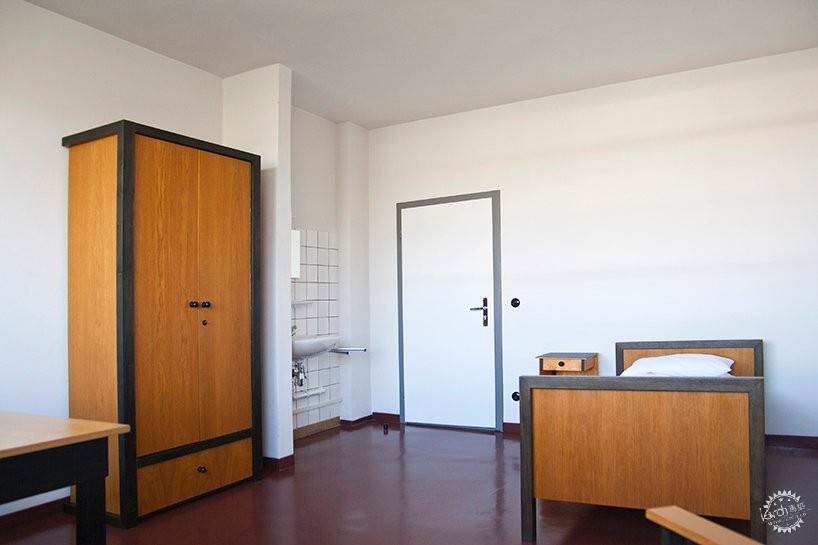
Image © Stiftung Bauhaus Dessau, photo: Yvonne Tenschert
与工作的建筑相反——在这里展示了一个令人惊叹的玻璃立面,揭示了里面发生的事情——学生的房间是私人的。然而,通过小阳台可以延伸到室外,这延续了其集体性精神。没有过多的装饰,每个房间都配备了一张床、衣架、梳妆台、水槽、书桌以及Mart Stam设计的几把Thonet 的S43 椅子,这里的实用性和简洁性提供了很高的价值。
Contrary to the workshop building — which showcases a stunning glass façade that reveals what happens inside — student rooms are private. However, they extend outside through tiny balconies that continue the spirit of collectiveness. Lacking any kind of decoration, each room is equipped with a bed, coat hanger, dresser, sink, desk, and a few Thonet S 43 chairs designed by Mart Stam, where a high value towards usefulness and austerity is applied.
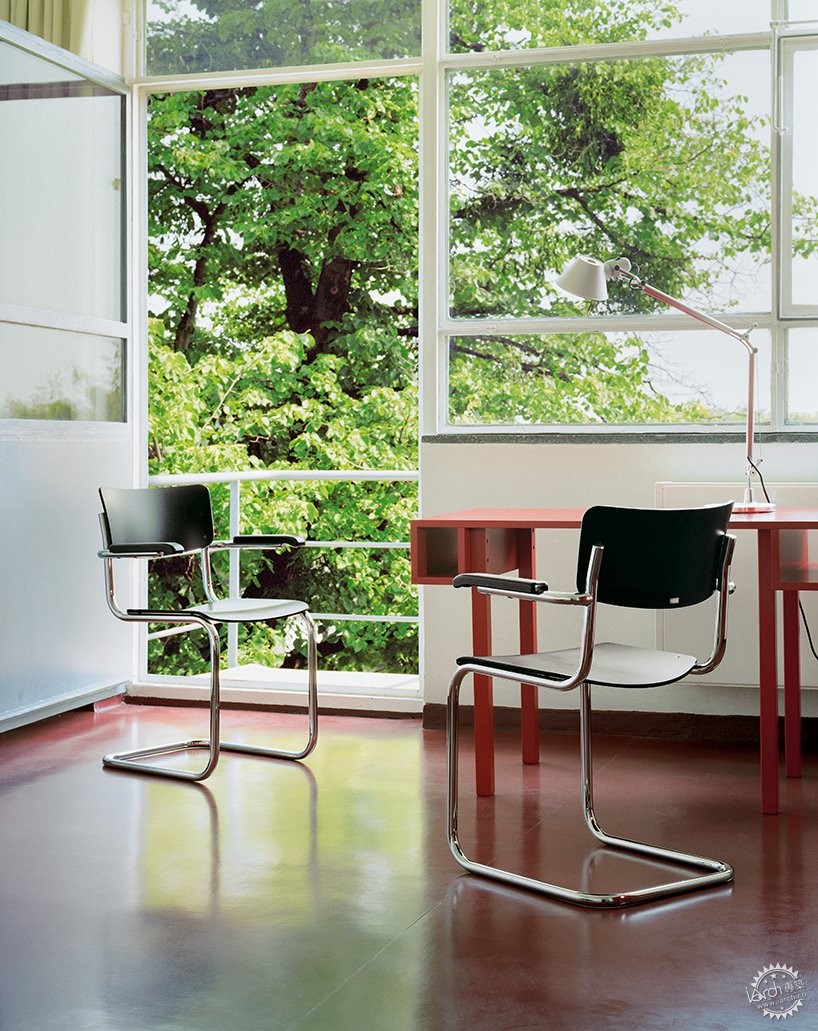
位于住宅大楼内的Thonet S 43椅子/Thonet’s S 43 chair sits inside the residence building. Image © Thonet
从€35的单人房到真正的包豪斯生活体验,在包豪斯酒店过夜无疑是一次朝圣之旅,无论是建筑师、设计师还是现代主义爱好者都会期待。 坐在床上,听到空荡荡的走廊里安静的嗡嗡声,人们可以想象在那间屋子里发生了什么,谁曾经睡在那里,是什么样的想法在里面被酝酿着。准备好和你有设计感的邻居共用浴室,记得不要错过楼下咖啡馆提供的美味早餐。
From €35 for a single room and an authentic Bauhaäusler experience, spending the night at the Bauhaus is a pilgrimage any architect, designer or modernism-aficionado should make. Sitting on the bed and hearing the quiet hum of the empty corridors, one can imagine what could’ve happened inside that room, who slept there, and which ideas were incubated inside. Be prepared to share the bathroom with your design-savvy neighbors, and make sure not-to-miss the wonderful breakfast served in the cafe downstairs.

Image © Stiftung Bauhaus Dessau, photo: Yvonne Tenschert
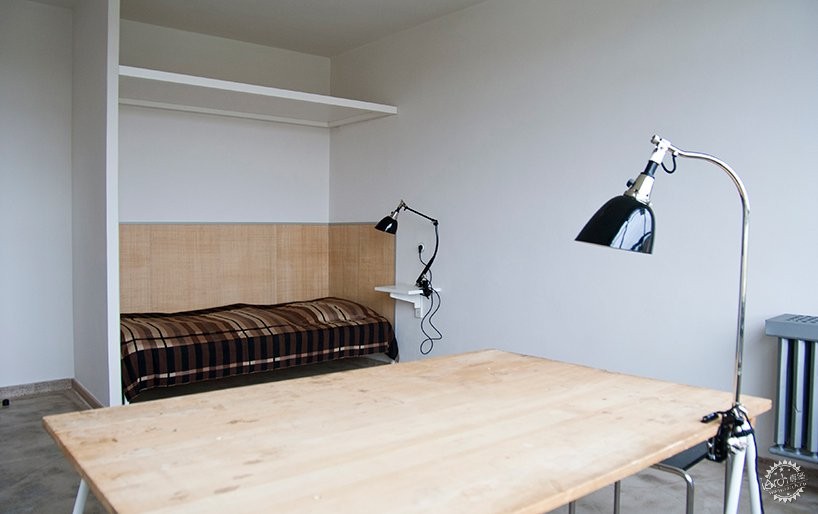
Image © Stiftung Bauhaus Dessau, photo: Yvonne Tenschert
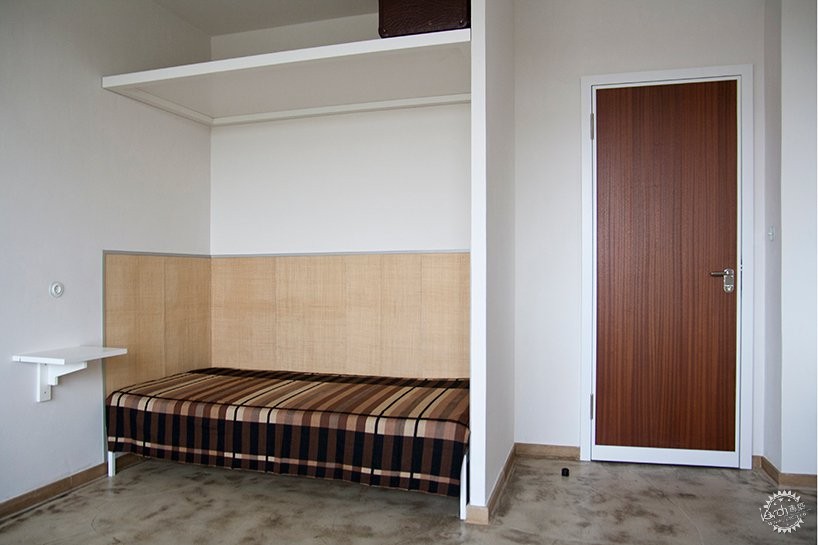
Image © Stiftung Bauhaus Dessau, photo: Yvonne Tenschert
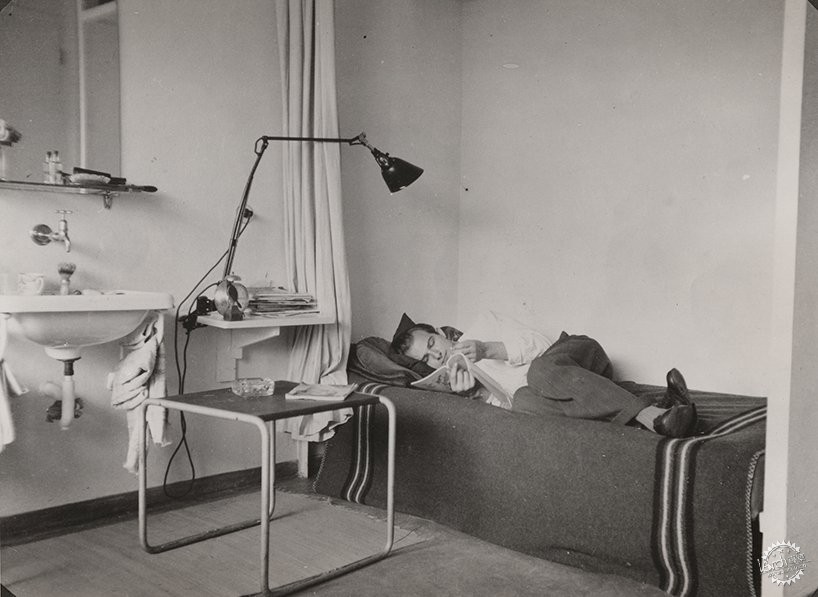
Siegfried Giesenschlag在学生的房间里,未注明日期 (Ca. 1926 – 1930)/Siegfried Giesenschlag in his student room, undated (Ca. 1926 – 1930). Image © Bauhaus-Archiv Berlin, Inv.nr.: 12246/1 / Stiftung Bauhaus Dessau
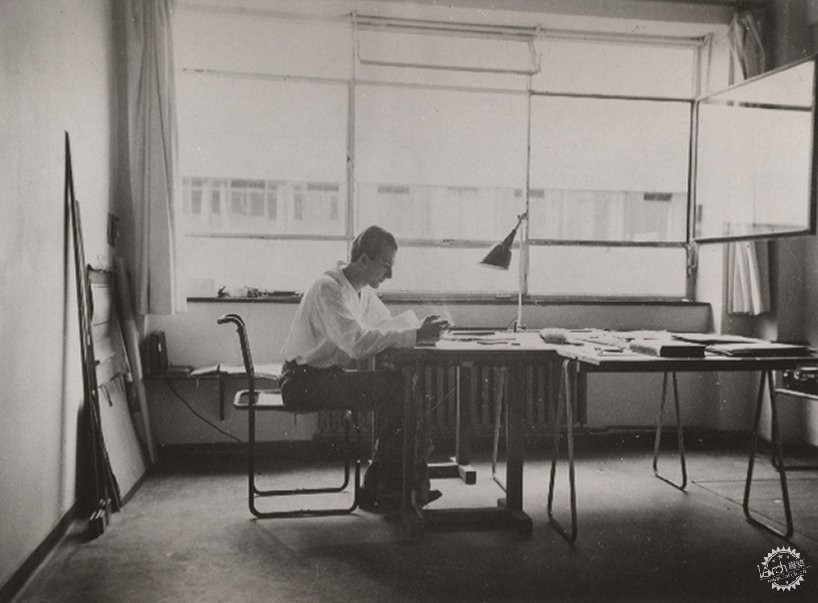
Siegfried Giesenschlag在学生的房间里,未注明日期 (Ca. 1926 – 1930)/Siegfried Giesenschlag in his student room, undated (Ca. 1926 – 1930). Image © Stiftung Bauhaus Dessau

Image © Tadashi Okochi, Pen Magazine, Stiftung Bauhaus Dessau
|
|
